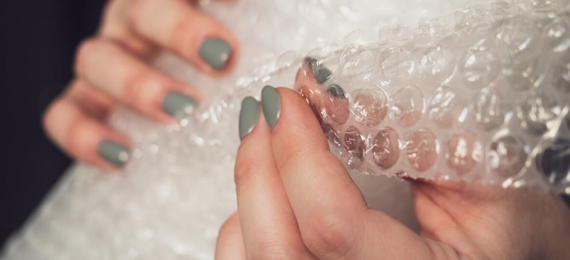
You might have heard that Bubble Wrap can act as a stress buster, and most companies wrap their electronic and glass products with it as a packaging tool. But have you ever wondered about the original purpose of Bubble Wrap? Here are some interesting facts about Bubble Wrap you need to know.
Bubble Wrap Facts and History
- In 1957, two physicists, Al Fielding and Swiss inventor Marc Chavannes developed Bubble Wrap in Hawthorne, New Jersey. However, none of them attempted to create a substance that could be used as packaging. Instead, they were attempting to make textured wallpaper. They began by taping two shower curtains together in such a way that air bubbles would be trapped, giving their wallpaper a textured appearance.
- This bubble wrap invention, known as the Bubble Wrap wallpaper concept, was a flop. They were undeterred and set about seeking a new application for their product. They came up with the idea of using it as greenhouse insulation as an alternative usage. Although Bubble Wrap does have some insulation, this concept was not well received.
- Frederick W. Bowers, a marketer at Sealed Air, the company that manufactures Bubble Wrap, came up with the best application for their product that is three years after it was first invented. IBM unveiled its first 1401-word length computer on October 5, 1959. That’s when the Bowers came up with the concept of using Bubble Wrap as a protective wrapping material for the device while it was being packed.
- He then presented the concept to IBM and explained the security properties of Bubble Wrap. After a successful presentation, IBM began using Bubble Wrap to protect their 1401 and other delicate products. The company has grown from modest origins to annual revenues of about $4 billion and a net profit of around $255 million. For context, Bubble Wrap makes up approximately 10% of Sealed Air’s sales, translating to roughly $400 million in sales per year.
Final Words
Despite starting as a packaging material for electrical devices, manufacturers today primarily use Bubble Wrap for food packaging. Bubble Wrap protected the pumpkin from harm during the fall. People can use Bubble Wrap as an inexpensive burglar alarm by placing large bubbled Bubble Wrap on the floor in front of their houses, among its many other applications. Another unconventional use, popular among teenage girls worldwide, is as bra stuffing.
Who Invented Bubble Wrap?
- A. Antoine Lavoisier
- B. Alfred Fielding & Marc Chavannes
- C. James Watson
- D. None of the Above